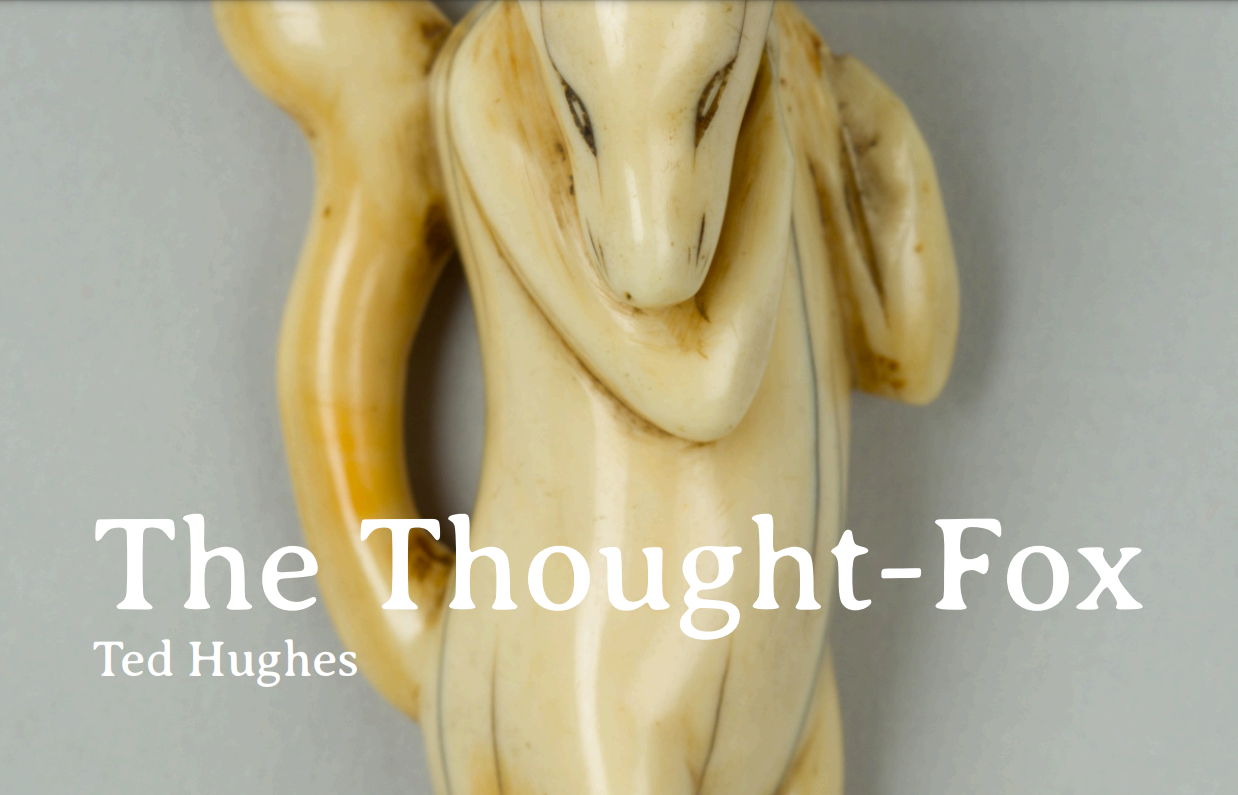The Thought-Fox by Ted Hughes: What is it About?
"The Thought-Fox" by Ted Hughes is a celebrated poem that delves into the creative process and the mysterious nature of inspiration. In this blog post, you can find a short analysis of the poem.
If you’re looking for more support, click the ‘Learn More’ button below to view our complete Ted Hughes IGCSE Poetry teaching and revision pack:
Title and Metaphor: The title, "The Thought-Fox," immediately introduces a metaphor that runs throughout the poem. The thought-fox is not a literal fox but represents the emergence of creativity and inspiration in the mind of the poet. It is a symbol of the poet's imagination and the act of artistic creation.
Imagery and Symbolism: Hughes uses vivid and evocative imagery throughout the poem to depict the act of writing and the arrival of inspiration. The poem opens with the speaker describing the "clock's loneliness" and the "blank page." These images convey a sense of emptiness and waiting for something to happen. The appearance of the thought-fox is portrayed as a sudden and vivid presence, as seen in phrases like "a shadow's foxiness" and "two eyes serve a movement." The fox's paw prints on the blank page symbolize the poet's words appearing on the paper.
Tone and Atmosphere: The tone of the poem is contemplative and introspective, reflecting the inner workings of the poet's mind as he awaits inspiration. There is a sense of anticipation and wonder as the thought-fox emerges and leaves its marks on the page. The atmosphere is one of quiet intensity, as if the poet is in a meditative state, waiting for the creative spark to ignite.
Themes:
Creativity and Inspiration: "The Thought-Fox" explores the mysterious and spontaneous nature of creativity. The thought-fox symbolises the sudden arrival of inspiration and the way it can transform an empty page into a work of art. The poem suggests that creativity is a force that comes from within, often when least expected.
Imagination and Artistic Process: The poem provides insight into the poet's imaginative process and the way in which ideas and words take shape in the mind before being transferred to the page. It emphasises the role of the poet as a conduit for the thought-fox and the act of giving form to the creative impulse.
Isolation and Solitude: The opening lines of the poem convey a sense of loneliness and isolation, with the "clock's loneliness" and the blank page. The arrival of the thought-fox represents a moment of connection and inspiration in the midst of solitude.
In conclusion, "The Thought-Fox" by Ted Hughes is a beautifully crafted poem that explores the mysterious and transformative nature of creativity and inspiration. It invites readers to contemplate the inner workings of the creative mind and the way in which ideas take shape in the process of artistic expression.
Thanks for reading!
Try our complete Ted Hughes IGCSE Poetry study bundle!
This bundle includes:
Tasks + Exercises + Possible Essay Questions
A range of student essay examples, including full-mark essays, with teacher feedback
Video lessons, digital study guides, printable workbooks + more!
Adaptable for teaching + independent revision or study

